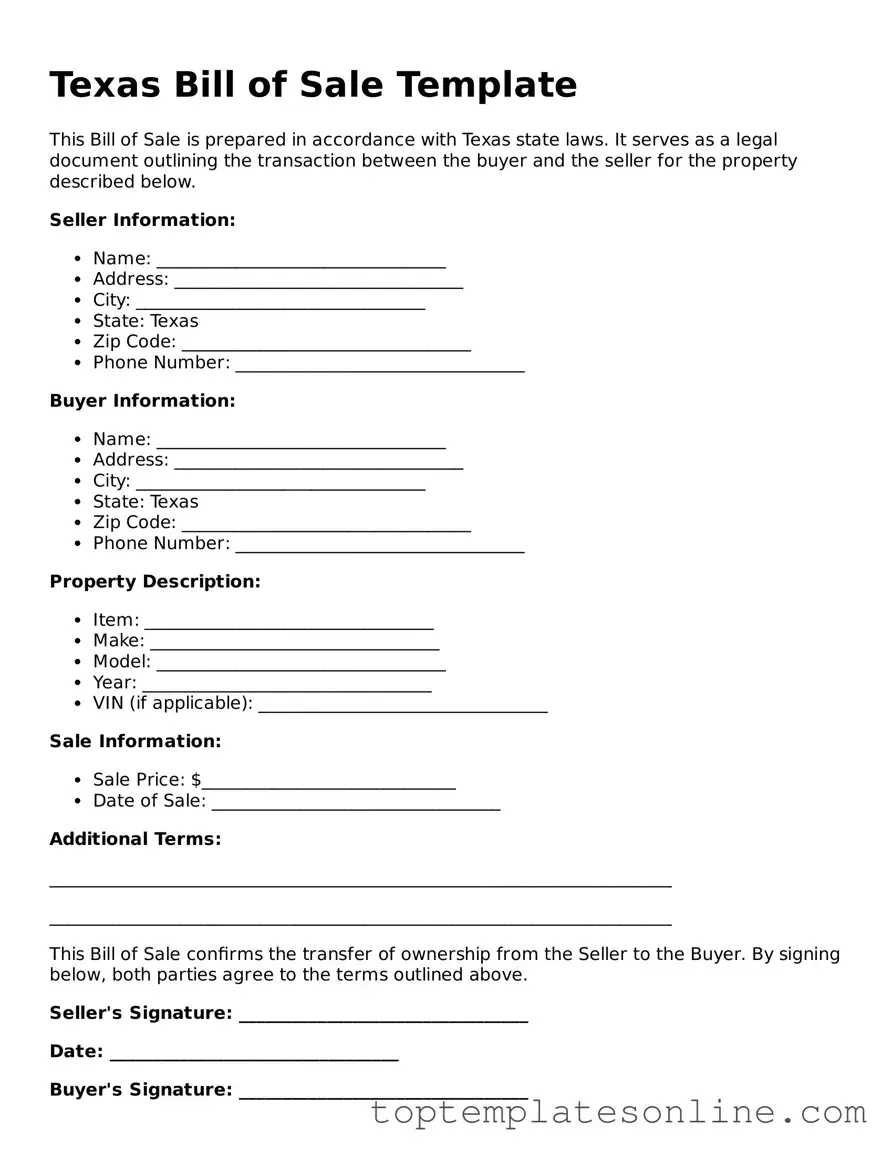Blank Bill of Sale Template for Texas State
The Texas Bill of Sale form is a legal document used to transfer ownership of personal property from one party to another within the state of Texas. This form serves as proof of the transaction, detailing essential information such as the buyer, seller, and a description of the item being sold. Understanding its components is crucial for both parties to ensure a smooth and legally binding transfer.
Customize Bill of Sale Here
